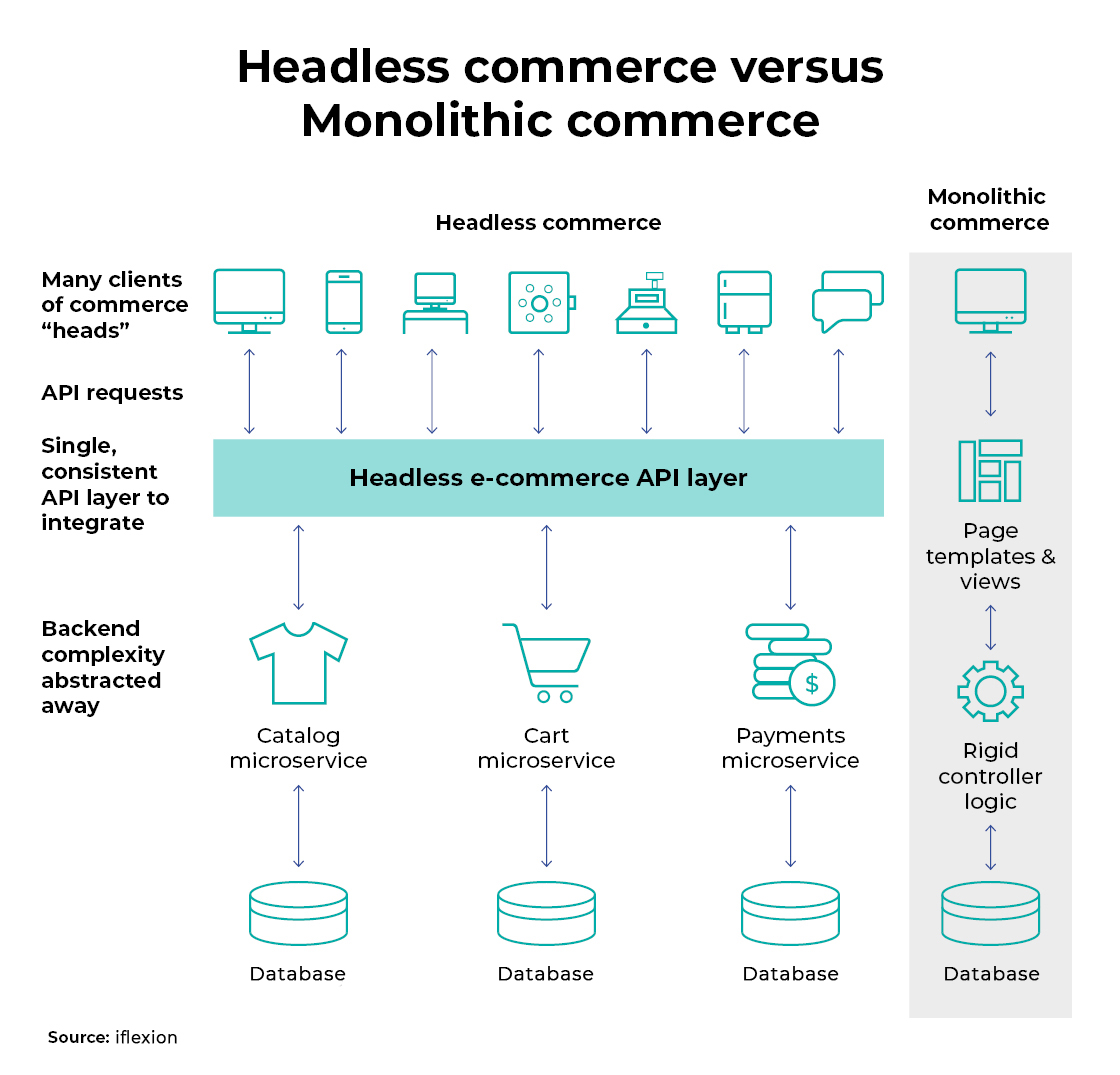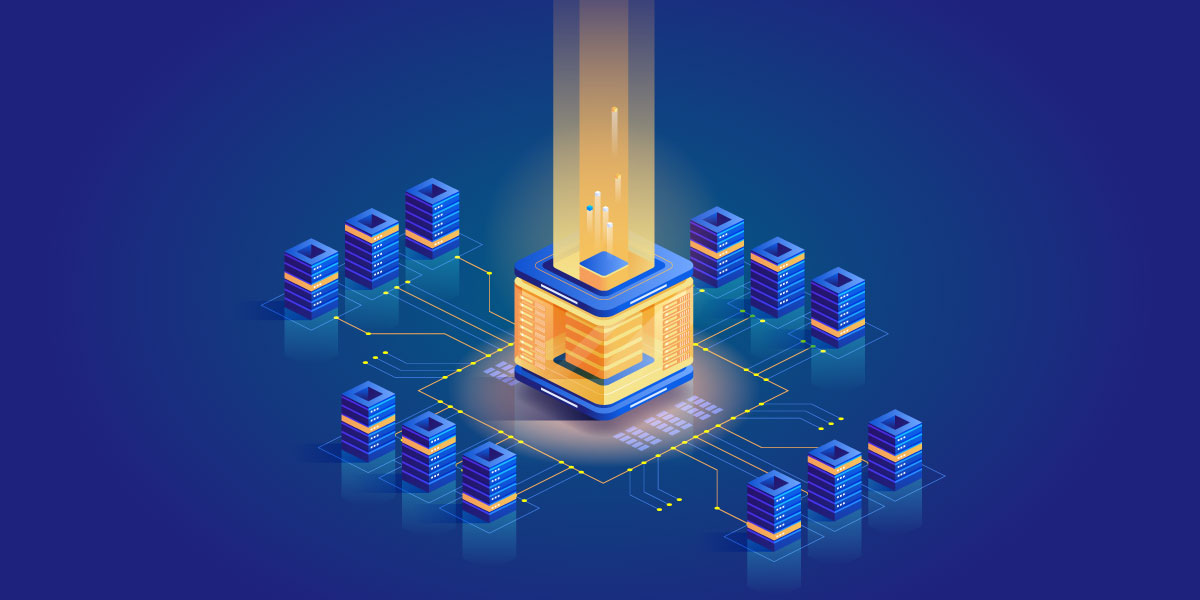Customers expect better digital experiences today than they did in the past. A 0.1 second improvement in mobile site speed brought in an 8.4% increase in conversion rate for retail sites. Aspects like high-speed, consistent omnichannel experiences, personalized messaging have become more important than ever. Additionally, there is intense competition in digital commerce, which means that successful companies are faced with one of the most challenging tasks: separating themselves from their competitors.
Here’s where headless commerce comes in. 27% of businesses looking to implement new e-commerce platforms say they are most strongly considering a headless-based platform, the second – most popular answer behind software-as-a-service at 32%.
What is headless commerce?
Headless commerce on an e-commerce platform is the decoupling of the front-end that is the shopping interface consumers see from the back-end which houses its data and functionalities. This approach enables marketing and merchandising teams to update their customer-facing stores without having to update complex back-end code or back-end systems. Similarly, e-commerce firms can also update their back-end functionalities without disrupting their front-end customer experience.
Owing to its decoupled architecture, brands and retailers are endowed with more flexibility over the customer experience they provide, thus helping them better engage with customers, and supersede their expectations. Through headless commerce, you can deliver distinctive, consistent and personalized shopping experiences across channels, using APIs (application programming interfaces) that connect multiple components of the front and back-end systems. In a nutshell, here’s how headless works differently when compared to monolithic or traditional commerce.

A headless commerce strategy comes with a myriad of benefits that can help scale your e-commerce business.
Related reading: Composable commerce goes beyond headless commerce
The advantages of headless e-commerce
Faster experimentation and deployment
Keeping pace with rapidly evolving market scenarios, whether it’s implementing dynamic pricing in response to inflation or planning hyperlocal assortments, a headless architecture enables you to achieve it all. Its decoupled approach and API-based workings make it an attractive solution for online shopping players eager to experiment with various features and functionalities to improve their current processes and experience.
This could range from dabbling with the latest Al-powered personalized search tools, or comprehensive data and analytics for consumer tracking, or deploying the most relevant payment solutions in a particular geography.
Personalization
44% of consumers say they will likely repeat purchases after a personalized shopping experience with a specific business. In the pursuit of earning and increasing customer loyalty, personalization plays an indispensable role. Headless commerce allows you to test your personalization strategies without disrupting your back-end systems since the front-end presentation layer is decoupled.
This way, marketers can create more relevant promotions and contextual shopping experiences based on the data generated from multiple consumer touchpoints. This ultimately translates to a wider audience reach and engagement, and the ability to proactively respond to customer behavior.
Integrated customer experience across channels
Digital consumers today use an average of almost six touchpoints in their path to purchase with nearly 50% regularly using more than four touchpoints. Headless commerce platform adopters can integrate their presence across channels without having to redefine their platform, and can facilitate transactions without the need for customers to visit their website.
For instance, by adding the “Shop Now” functionality to your Instagram posts, you can turn this channel into a mobile storefront. Using the same data and functionalities present on your current database, headless as an approach enables you to launch new customer touchpoints founded on standard APIs, thus facilitating a unified customer experience.
There is no denying that headless commerce systems gear its patrons with some unparalleled benefits, but this transition can be challenging. Here’s what you need to know:
Concerns around deploying headless commerce
Re-platforming can get complex
While switching to a headless platform has many long-term perks, e-commerce re-platforming can be time-consuming and difficult, especially if you want to implement a gamut of front-end experiences and back-end deployments. This needs slicing down your current monolith architecture so as to be adaptable to the new headless environment.
Demands constant oversight
True, a headless architecture bestows the flexibility to explore new customizations across multiple e-commerce facets. However, the more functionalities you plug in, the more competence and resources you need to ensure that no vendor’s solution hinders or overrides others, rendering the whole process unwieldy. Plus, being a solution that’s customized for your business, you will need a support team to keep an eye out for updates, documented protocols, release schedules, etc., to ensure all your functional blocks are always optimized for efficiency.
Expensive
Despite the fact that a headless architecture allows you to pay based on usage, the total cost of ownership increases when multiple platforms and integrations are utilized. In some instances, the number of different components, their deployment, hosting, storage, and maintenance can add up and raise the overall cost.
Having said that, going headless or not really boils down to your business growth objectives, customer expectations, the functionalities required to fulfill them, and your overall budget. All in all, headless commerce helps you stay agile, competitive, and customer-focused, unlike traditional monolithic architectures. Savvy e-commerce players are already monetizing this technology while shifting gears to more advanced applications like composable commerce.
Over two decades, Netscribes has been helping leading online brands and retailers to uncover, analyze, and discern the best e-commerce solutions that align with their business and growth objectives. To know how we can help your firm make well-informed and strategic digital commerce technology implementations, contact us today.






